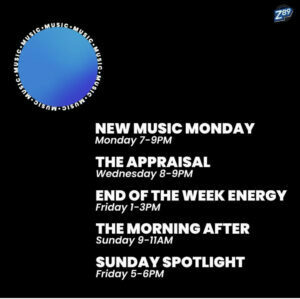Elle King Symbolizes Country’s Increasing Ability, and Willingness, to Experiment
With the Jan. 27 release of Elle King’s Come Get Your Wife, the expansiveness of modern country is firmly on display.
The album melds a banjo-toting female artist who emerged in rock and adult alternative genres with a country format that is increasingly testing its boundaries. The project mixes a range of sounds and influences — Southern rock, blues, bluegrass, classic soul and folk/pop — in a manner that’s impressively cohesive, built around King’s gritty vocal and spacious, funky approach to the banjo.
Come Get Your Wife comes at a time when country artists are pushing the genre’s borders in multiple directions, taking risks but maintaining enough of its identity that the outlier material still holds a connection to country’s core.
Chris Young’s current “Looking for You” utilizes a pitch-shifted version of an Emily Weisband vocal to create an other-worldly sonic hook. Jordan Davis’ “What My World Spins Around” incorporates a tremolo electric guitar effect that mirrors The Smiths’ 1984 new wave piece “How Soon Is Now?” Jelly Roll’s “Need a Favor” and the HARDY collaboration with Lainey Wilson, “wait in the truck,” rely on haunting gospel choirs to bring home their drama. And Walker Hayes’ “Y’all Life” features a washed-out drum sound while employing loose gang vocals to carry the lead melody.
The developments aren’t exactly new, but the volume of outside sounds and techniques at work in country reflects changing attitudes among artists and fans, as well as a wider array of available tools and easier access to music through streaming platforms.
King, in fact, felt more freedom to combine her multiple influences while making a country album than in her previous recordings. That represents a major change from the past, when artists have at times complained that the format is too stifling.
“I realized that I could pull from each of [my influences] and make this sound, which is country music to me,” King says. “This album doesn’t sound that far off from anything that I would have [previously] made, but I felt like because I could have this, I don’t know, shell to put on it, I could bring in what I wanted from each place and each feeling.”
The cooperative marketing effort for Come Get Your Wife, involving Sony offices in New York and Nashville, is representative of a friendlier cross-genre atmosphere. Warner/Chappell and Big Machine similarly cross-pollinate between Nashville and Los Angeles, and Music City songwriters are increasingly meshing with composers from other industry centers.
“Nashville is lending to L.A., and L.A. is lending right back to Nashville,” notes Laura Veltz, a Nashvillian currently nominated in the Grammys’ new songwriter of the year category, recognizing her work with country artists Maren Morris and Ingrid Andress, as well as pop singer Demi Lovato.
Technology plays a major role in the development, as the rise of the internet changed the way music is both created and consumed. On the production side, musicians and producers have far more sounds available through a wider selection of sound-shaping pedals and computer plug-ins, particularly compared with previous eras, when studio pros were expected to churn out four songs in a three-hour session, usually applying the same instruments to each of the tracks.
“Harold Bradley might play guitar on one song and turn around and play a banjo on the next one,” says Bill Anderson. “So they did change instruments a little bit and sometimes played two instruments on the same song. But all the things they have available to them now, we didn’t have that. I don’t know if we’d have used it or not.”
On the consumer end of the equation, the ability to identify, locate and sample music online is extraordinarily fast, matched up against the pre-internet age, when less music was available and the music fans heard beyond the radio was mostly proportionate to their willingness to purchase albums.
Now consumers can speed through genres and catalogs, cross-reference studio work against live recordings and find artists and sounds that would have been obscure to their grandparents. Like the artists themselves, fans are thus more willing to hear Queen or Beach Boys influences in country, as happens in some Dan + Shay recordings.
“We’re very fortunate, I feel like, to live and breathe in a time in music where we aren’t so segregated and isolated,” says Joel Smallbone of contemporary Christian act For King + Country, appropriately nominated in the Grammys for a collaboration with Hillary Scott of the country trio Lady A.
One reason that country is arguably able to maintain its identity now that the walls are falling down is that many of its artists — such as Young, Tyler Hubbard or Thomas Rhett — retain their Southern accents no matter what non-country sonics surround them.
“Chris is a great example,” says Chris DeStefano, co-writer and co-producer of “Looking for You.” He has a very country voice. I think Morgan Wallen is another amazing example. He’s got the cheat code for country music. He could sing anything, you can put a [hip-hop] 808 beat under him; it still sounds country.”
King’s new album puts the trend in focus most clearly with two songs that appear back-to-back on the project: “Try Jesus” weaves a church organ and thick gospel choir into an otherwise-country production, while “Drunk (And I Don’t Wanna Go Home),” her Grammy-nominated duet with Miranda Lambert, leans heavily on the interplay between tribal drums and an unusual two-note bass guitar riff. Country’s increasing openness was perfectly timed for her appearance in the format.
“I’ve noticed a difference in wider-open sliding doors even since 2016, 2017, when I first met Dierks [Bentley],” she says. “I feel like country makes room for good music, a good song. I don’t want anyone to kick me out.”
Powered by Billboard.
